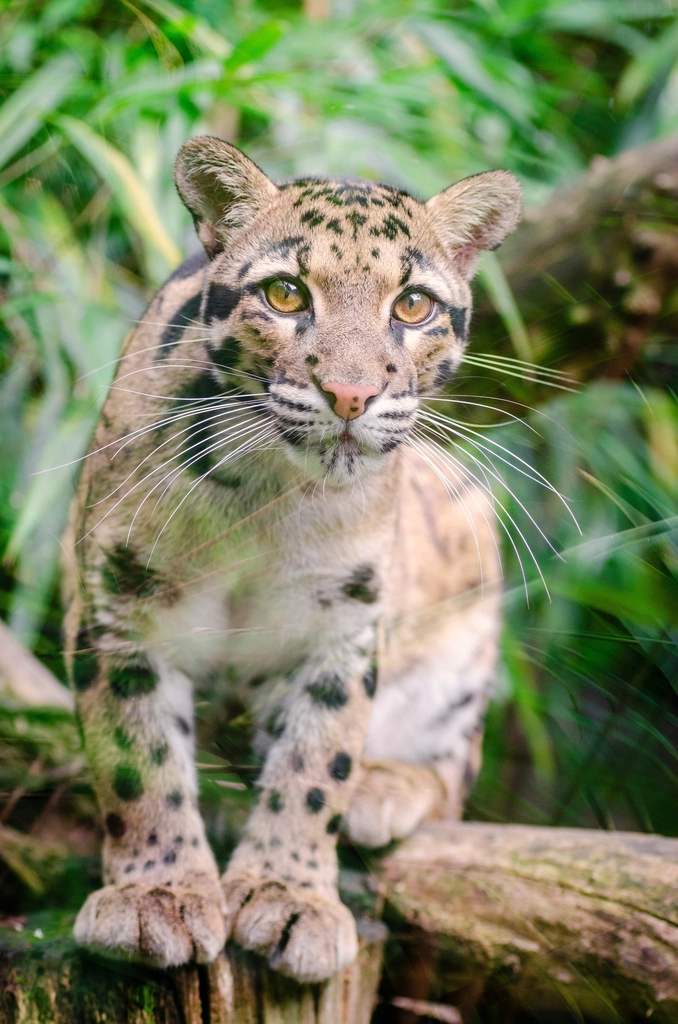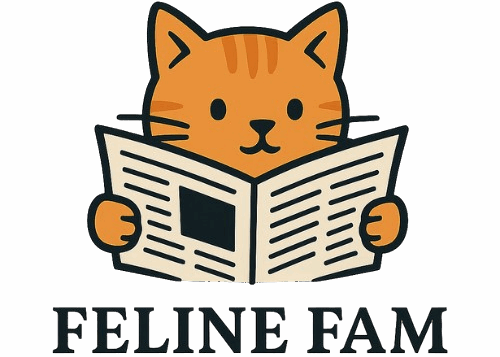Imagine standing in the heart of a wild jungle when a deep, thunderous roar cracks the air—your heart pounds, your body tingles. That’s the language of big cats, a mysterious code written in sound, movement, and expression. Each purr or growl tells a story, a secret whispered across forests and savannahs. Let’s step quietly into their world, where every twitch of a tail or glint in a golden eye means so much more than meets the ear.
The Mighty Roar: Lion’s Thunderous Voice

A lion’s roar can travel up to five miles across the African savannah. It’s not just a warning—it’s a declaration of territory, a call to pride members, and a sound that sends chills down the spines of rivals. There’s nothing subtle about it: this is kingly confidence at full volume.
Tiger Talk: Stealthy Chuffing

Tigers don’t roar as often as you’d expect. Instead, they communicate with a friendly “chuff”—a soft, breathy snort that feels almost like a feline handshake. It’s warm and welcoming, used between mothers and cubs or friendly adults, a sign of trust in the shadows of their jungle home.
Purring Panthers: The Secret Rumble

Panthers, often mysterious and solitary, have a soft side. Their low, continuous purrs signal contentment, much like a housecat curled in a sunbeam. This soothing sound, felt more than heard, is a lullaby that echoes through dense rainforests, a rare peek into a secretive life.
The Leopard’s Sneeze: Sawing Calls

Leopards don’t roar like lions—instead, they announce themselves with a harsh, sawing rasp that cuts through the silence like a blade. It’s an unmistakable sound, part cough, part growl, and entirely leopard. With it, they claim territory, send warnings, or call to mates, all while staying hidden in the shadows. It’s the perfect voice for a cat that thrives on stealth: loud enough to be heard, but elusive as ever.
Cheetah Chirps: High-Speed Conversations

Cheetahs speak in high-pitched chirps, yelps, and meows—more songbird than big cat. A mother’s sharp chirp can travel long distances across open plains, helping her locate wandering cubs in the tall grass. These vocalizations are quick and piercing, matching the cheetah’s swift, high-energy world. In a family built on speed and separation, sound becomes their lifeline.
The Jaguar’s Growl: Rainforest Rumble

A jaguar’s growl rumbles like thunder through the underbrush—low, menacing, and primal. In the dense, echo-rich jungle, where visibility is limited, sound becomes survival. That deep growl carves space, signaling strength without the need for a fight. It’s not just communication—it’s presence made audible, a reminder that the shadows have teeth.
Siberian Tigers: Snowy Silence and Subtlety

In Siberia’s frozen stillness, the Amur tiger is both hunter and phantom, padding silently through snowdrifts with breath you can barely see. When they do speak, it’s with soft chuffs to cubs or resonant calls that roll across the taiga like distant thunder—brief, deliberate, and bone-deep. In this world of cold and quiet, sound is sacred, used sparingly, like fire in winter. Even their silence has weight, echoing through the forest like a presence felt more than seen.
Lionesses: Whispered Bonds

In the hush between roars, lionesses murmur to one another with low grunts, purrs, and moans—a vocabulary of closeness passed between mothers, sisters, and cubs. These sounds help guide the pride through golden grass and fading light, keeping bonds tight even when danger looms. It’s not just communication—it’s reassurance, a constant thread of connection in the rhythm of their lives. In the warm breath of dusk, their voices weave the pride into one.
Snow Leopard Echoes: Whistling Winds

Snow leopards move like whispers through the peaks, their silence as deliberate as their steps. Their rare vocalizations—gentle yowls, low growls, or mews—are fleeting, often carried away by the alpine wind before reaching another soul. In their high-altitude realm, sound is sparse, and presence is felt more than heard. The mountains hold their secrets well, and the snow leopard is one of the quietest among them.
Puma Hums: Mountain Murmurs

Pumas, also called cougars or mountain lions, are surprisingly chatty. They purr, whistle, and even chirp to their young. Their language is gentle, blending into the rustle of leaves and the hush of twilight.Bobcats, North America’s secretive wildcats, yowl and squall during mating season. These dramatic sounds cut through forests, signaling readiness and staking claim. It’s a wild opera, passionate and raw.
Lynx Laughter: Chattering Calls

Lynxes break their silence with bursts of chattering that sound oddly like laughter echoing through the pines. This strange, staccato sound—used in play, courtship, or moments of tension—adds a spark of character to these elusive forest dwellers. In a world often ruled by stillness and stealth, the lynx’s voice feels almost mischievous, hinting at a personality beyond the predator’s mask. It’s a wild giggle in the snow, fleeting and unforgettable.
Caracal Clicks: Ears on Alert

Caracals communicate in crisp clicks and sharp cries, sounds that seem to cut the air with intent. These short, percussive noises often accompany the subtle flick of their dramatic black ear tufts, which act like punctuation in a sentence only the wild can read. Whether stalking prey or expressing irritation, their communication is a choreographed blend of motion and sound. In the dry grasslands, every twitch and click tells a story of precision and poise.
Serval Serenade: Chirps and Hisses

Servals, with their oversized ears and spring-loaded strides, punctuate the silence with sharp chirps, purrs, and abrupt hisses. These quick, high-frequency sounds mirror their swift, agile lifestyle—short bursts of communication that don’t give away too much. Whether warning a rival, calling to a mate, or coaxing a cub, their voices are as precise and efficient as their pounces. In the rustling grass, a serval speaks in whispers of sound and flashes of motion.
Clouded Leopard Murmurs: Forest Whispers

Clouded leopards, ghostlike in their rainforest realm, speak in muted tones—soft mews, low growls, and the occasional hiss that barely stirs the air. Their voices seem designed for secrecy, folding into the ambient hush of mist and canopy. These subtle sounds help them stay connected to mates or cubs without betraying their presence to prey or rivals. In a world of shadows and filtered light, their communication is as delicate and elusive as the cats themselves.
Sand Cat Silence: Desert Disguise

Sand cats, built for survival in the harshest deserts, are nearly invisible both to sight and sound. Their silence is their strength, allowing them to vanish into the dunes, unnoticed by predator and prey alike. But when they do break that hush—with a soft meow, a low growl, or an eerie bark—it’s like hearing the desert speak. Brief and haunting, their voices are as rare and elusive as rain in the sand.
Fishing Cat Gurgles: Wetland Wonders

Fishing cats communicate with an oddly charming gurgle—a bubbling, throaty call that mirrors the flowing waters they haunt. This vocalization, heard during courtship or between mother and cubs, carries surprisingly well across marshes and reed beds. Just like their bold dives and splashy hunts, their voices reflect a life lived on the edge of water and land. It’s the wild calling in ripples and laughter, hidden in the reeds.
Ocelot Trills: Jungle Melodies

Ocelots trill with a rhythm that feels almost like birdsong, a rolling, lyrical call that winds through the undergrowth like a secret. These melodic vocalizations carry messages of curiosity, affection, or playful warning—each note wrapped in the dense mystery of the jungle. Their voices feel alive with personality, expressive and unpredictable, much like the cats themselves. In a forest full of whispers, the ocelot sings its own wild verse.
Margay Mimicry: Master Impersonators

Margays are master impersonators in the canopy, mimicking the cries of baby monkeys to draw curious prey within striking distance. This rare vocal mimicry is more than clever—it’s calculated deception, turning sound into a weapon. In the dense jungle where visibility is low, such auditory trickery gives the margay an edge that few predators possess. It’s a haunting reminder that in the wild, even a cry for help can be a trap.
Rusty-Spotted Cat Peep: Tiny Voices

The rusty-spotted cat, often no larger than a domestic kitten, speaks in whispers of the wild—gentle peeps, faint mews, and quiet chirps that seem designed to vanish into the leaf litter. These delicate vocalizations reflect the cat’s elusive nature, revealing just enough for a mate or mother to hear, but not a predator. In the hush of the Indian forest, its voice is a thread of sound, fragile and fleeting, like dew on grass at dawn.
Conservation Roars: Voices at Risk

Once, the forests echoed with roars that marked territory, warned rivals, and sang of survival. Now, too many of those voices have gone quiet, silenced by shrinking habitats and human greed. To save big cats is to save a soundscape—one woven from ancient calls that shaped the rhythm of the wild. Protecting them means ensuring that these primal languages continue to resonate, fierce and full of life, into the future.
Body Language: More Than Words

Big cats are masters of unspoken language—every gesture, no matter how small, holds meaning. A flicking tail can warn, a yawn can disarm, and a slow, deliberate blink can speak volumes about safety and connection. These subtle cues form a silent dialogue that flows between mother and cub, rival and mate, predator and prey. In their stillness, they say more than a roar ever could.
Eyes That Speak: The Gaze of a Hunter

A big cat’s stare isn’t just observation—it’s declaration. Locked eyes can freeze prey, settle dominance, or quietly express trust between kin. That unblinking gaze carries centuries of instinct, emotion, and power, distilled into a single, searing moment. In the wild, a look is never casual; it’s conversation in its rawest form.
The Family Code: Cubs and Mothers

In the quiet space between danger and discovery, mother cats and their cubs weave a bond through purrs that soothe, nuzzles that guide, and gentle calls that reassure. This intimate language isn’t just affection—it’s a survival manual written in touch and tone. Through these whispers of warmth, cubs learn when to hide, when to follow, and how to trust the world one heartbeat at a time. It’s love turned instinct, passed down in every breath.
Harmony and Survival: The Symphony of the Wild

Every roar, purr, and growl is more than sound—it’s survival set to rhythm. From the thunderous roar of a lion to the gentle chirp of a cheetah, each vocalization carries meaning, memory, and intent. Together, these voices form a wild symphony that echoes through forests, grasslands, and mountains, reminding us that nature still speaks. Listening is the first step to understanding—and protecting—the harmony they create.

Suhail Ahmed is a passionate digital professional and nature enthusiast with over 8 years of experience in content strategy, SEO, web development, and digital operations. Alongside his freelance journey, Suhail actively contributes to nature and wildlife platforms like Feline Fam, where he channels his curiosity for the Feline into engaging, educational storytelling.
With a strong background in managing digital ecosystems — from ecommerce stores and WordPress websites to social media and automation — Suhail merges technical precision with creative insight. His content reflects a rare balance: SEO-friendly yet deeply human, data-informed yet emotionally resonant.
Driven by a love for discovery and storytelling, Suhail believes in using digital platforms to amplify causes that matter — especially those protecting Earth’s biodiversity and inspiring sustainable living. Whether he’s managing online projects or crafting wildlife content, his goal remains the same: to inform, inspire, and leave a positive digital footprint.






